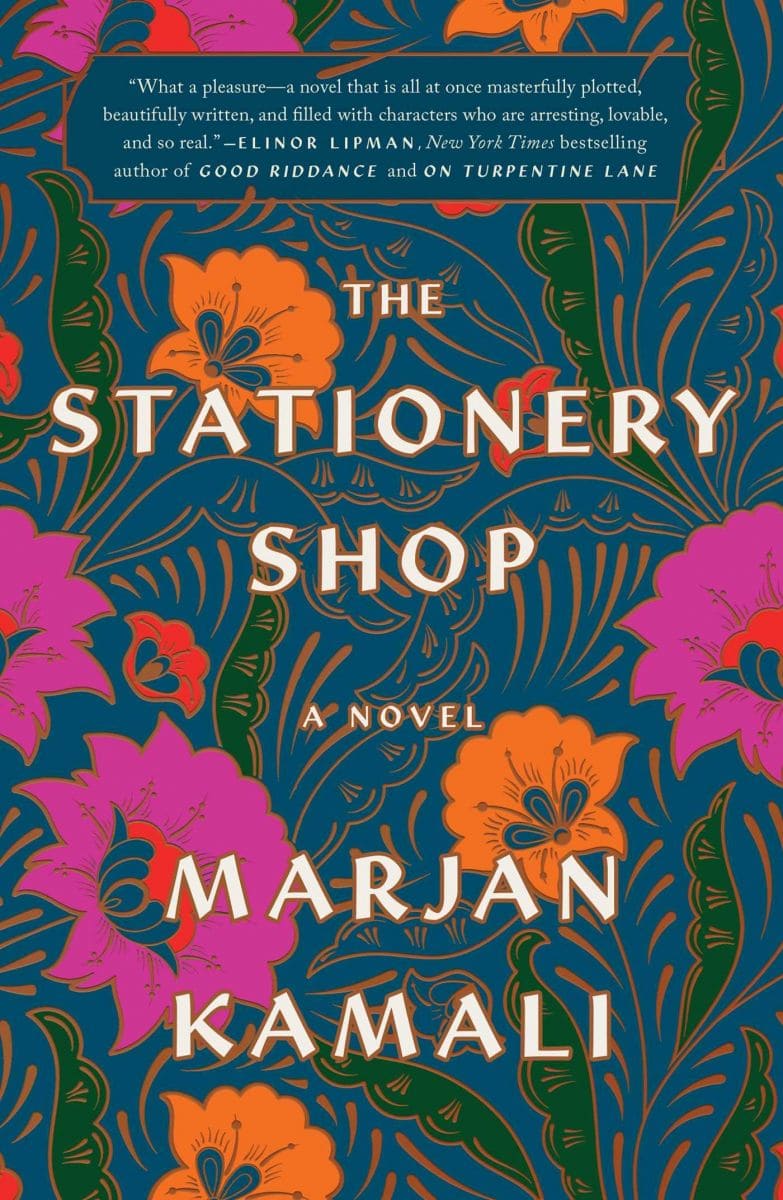
BG 2 October 2023 - Review The Stationery Shop by Marjan Kamali
The Stationery Shop is an historical fiction novel set in 1953 in both Tehran, Iran and the United States, that tells the story of Roya and Bahman. In a time of political upheaval, Roya the main protagonist finds solace in the local stationery (and book) shop, where she meets a young, ambitious Bahman and they fall in love. The story about young love is created with characters who live through a tumultuous time in Iran’s history without becoming stereotypes for a country or a generation.
Roya meets Bahman, who wants to change the world. Contrasted against Roya’s meek view of the world she inhabits with Zari, her younger sister, and parents who are forward-thinking and have ambitions for their daughters, Bahman is a firebrand, and a political activist. Their mutual love of books and Rumi’s poetry is nurtured against the backdrop of the conflict in the country within the safe confines of a shop owned by the kind Mr. Fakhri who plays Cupid.
The book traverses continents and decades as the political fate of the country intersects the love story and takes Roya and Zari to America where they enroll in college and try to fulfil their father’s dreams of scientific and literary careers for his girls.
Marjan Kamali describes California of the mid-fifties and reveals how the act of moving from a sheltered family life into a new country impacts the two sisters. Getting used to new ways like shaking hands, wearing shoes inside the house, new food, burgers and fries and of course, learning a new language are introduced without over-the-top narration. References to Nowruz, the Persian New Year, and detailed descriptions of recipes using saffron and rose water fit well into the narrative which is focused on the life of Roya and is good information for those readers who are not familiar with Persian culture.
As Roya becomes entrenched in her American life with Walter, a kind earnest man who she gets married to, the narrative shifts to a more straightforward narration that is not as evocative as the part set in Iran.
The story of romance of Roya and Bahman is pieced together through letters that flash forward through the years before bringing them back into each other’s lives. There is something unusually poignant about the bond between Roya and Bahman that jumps out in the scenes that feature both of them. Can someone fall in love so deeply at the tender age of seventeen and carry the burden of the love and the mystery of their separation while living fully engaged lives without contacting each other? It seems unrealistic in today’s age of constant contact and communication. Roya and Bahman’s story is far more bitter than it is sweet. Perhaps the beauty of the story lies in the inability and unwillingness of Roya to rip apart the reason for her heartbreak and her capacity to carry on.
Roya’s family life and relationships through the book are rock solid. Even with the looming shadow of political unrest, there are no outright villains and saviors, no absolute heroes. Among the main characters, some rise above petty selfishness and societal restrictions to improve the lot of others, while others are unable to break the shackles of their personal pain and tragedy.
My favorite parts of the book were the historical and cultural aspects of the story and the feminist threads that ran throughout. The story is an easy read that reminds us, once again, that although time may dull the memory of certain wounds, it still remains a part of our DNA. Instead of giving up or giving in, it is acceptance of oneself and of the other, that can help us move forward through life. Our group rated the book 7/10.
Aseema Singhal
